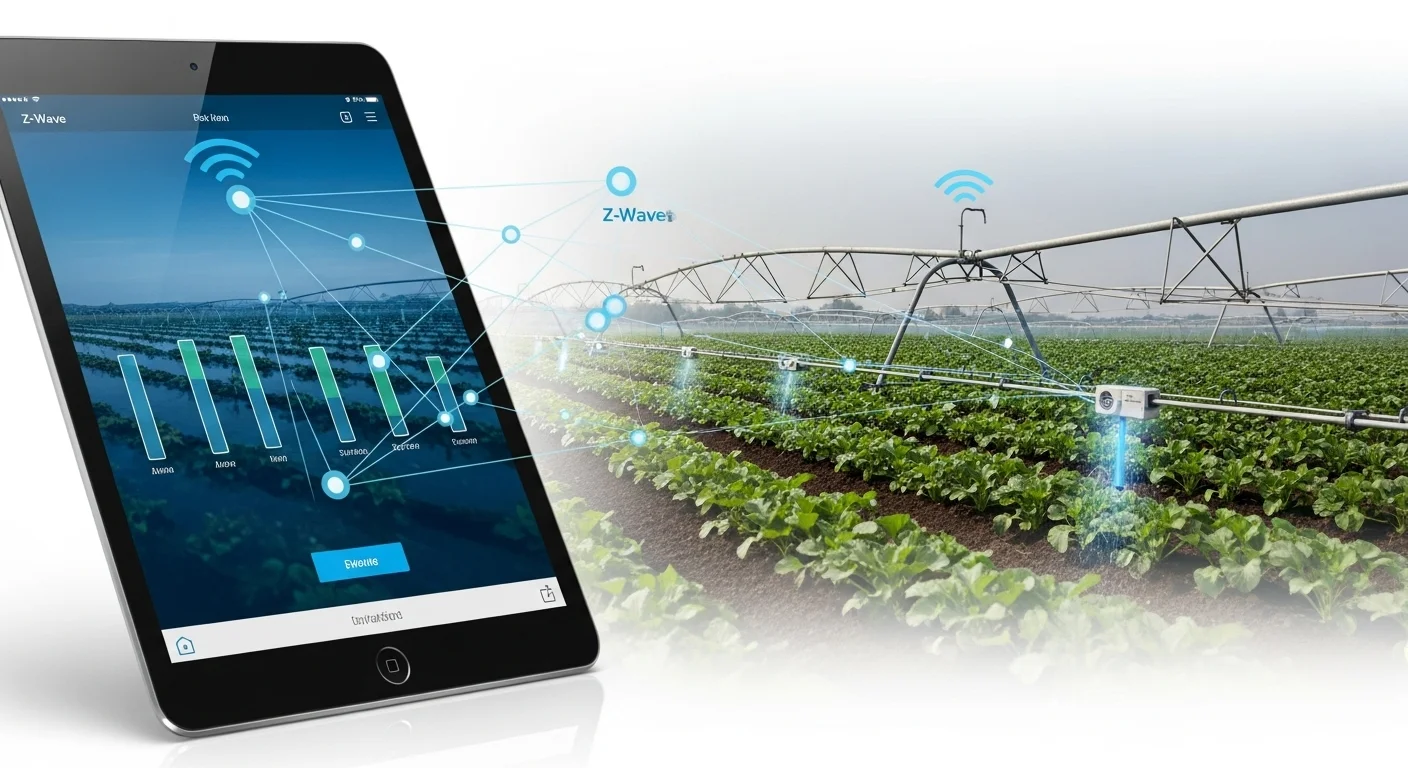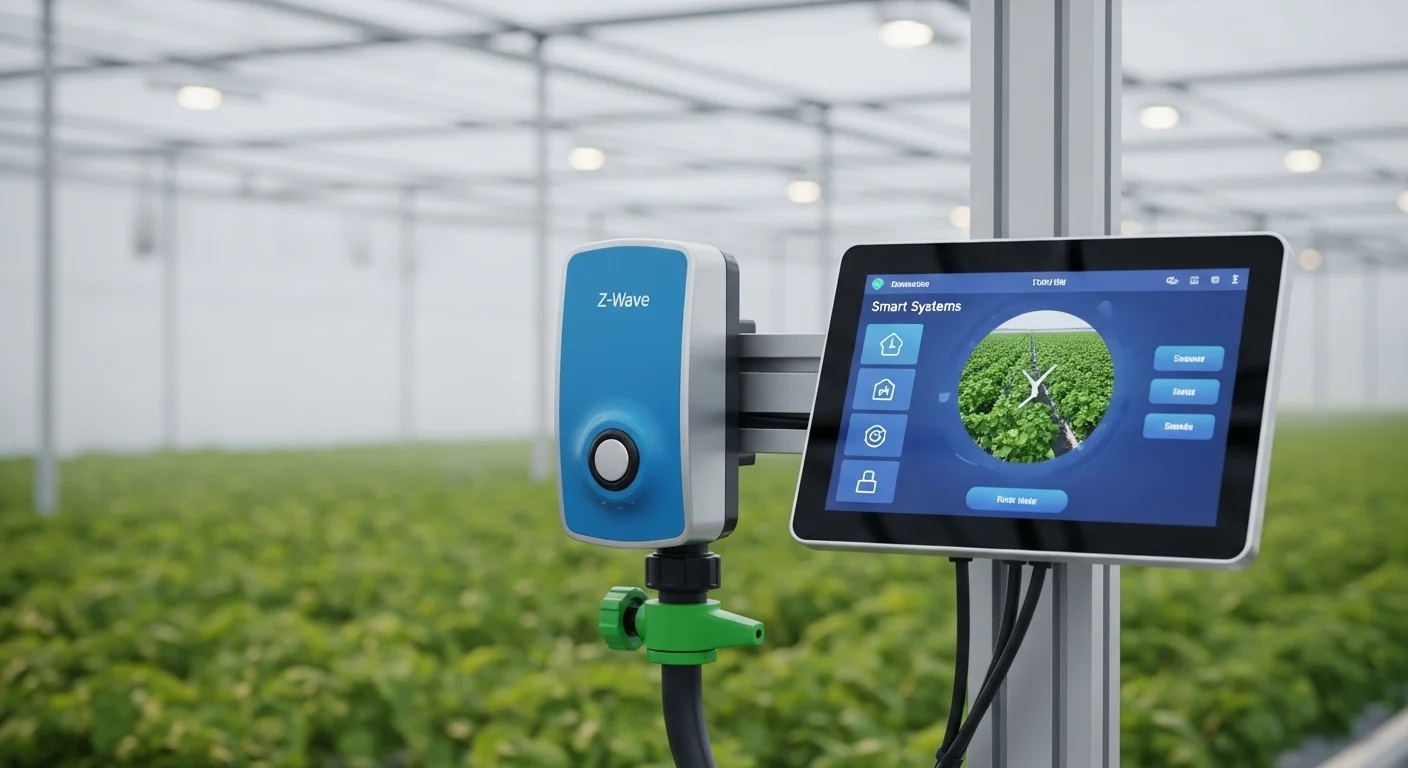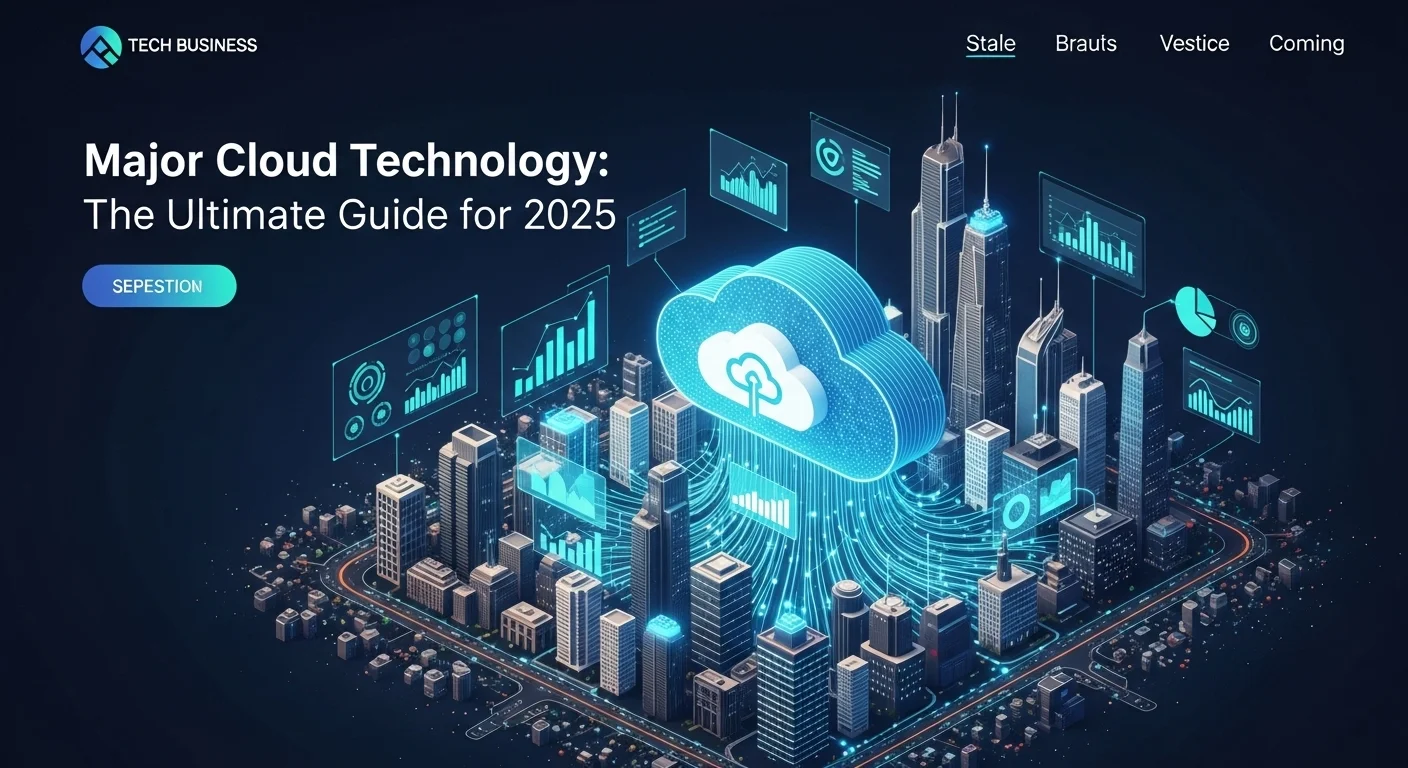Smart Irrigation Guide: My Journey with Z-Wave and Home Assistant

Executive Summary
I used to be that person with the patchy, sad-looking lawn. I’d either forget to water it, or I'd overwater it, creating a swamp. The game changed when I discovered smart irrigation, specifically using Z-Wave wireless tech. In this guide, I'm going to share my personal journey and everything I've learned about how a Z-Wave irrigation system can save you water, money, and bring your garden back to life. We'll cover everything from picking the best Z-Wave irrigation controller to creating powerful automations with Home Assistant. Whether you're a homeowner tired of wrestling with hoses, a business owner looking to cut costs, or a tech enthusiast like me, this is your roadmap to moving from guesswork to perfect, data-driven watering.
Table of Contents
What Smart Irrigation Really Is (And Why It Matters)
Let's be honest, for decades, 'watering the lawn' meant setting a clunky mechanical timer and hoping for the best. It was a chore based on guesswork, and it often led to wasted water and unhappy plants. I’ve been there. At its heart, irrigation is simply giving your land the water it needs. But when you mix in modern technology, it becomes something transformative. We're not just talking about timers anymore; we're talking about precision, intelligence, and genuine efficiency. This is crucial today, as we all face challenges like water shortages and the need to be more sustainable. I've seen in my own projects how smart irrigation can slash water usage by 50% or more, simply by ensuring every drop has a purpose. For me, that’s not just an environmental win; it's real money saved on my utility bills.
This is where smart home protocols, like Z-Wave, truly shine. I've tested all kinds of setups, and for something as critical as irrigation, reliability is king. A Z-Wave irrigation system is my go-to recommendation because it uses a low-power mesh network. Think of it like a team of helpers passing a message along. If the main hub can't reach a sprinkler valve directly, the signal 'hops' through other Z-Wave devices, like a smart plug or light switch, to get there. This creates a rock-solid network across your entire yard, which is something a single Wi-Fi router often struggles to do. Plus, Z-Wave operates on a less crowded frequency than Wi-Fi, so there's less interference from your other gadgets. It's built for control and monitoring, which is exactly what you need for a system you can truly set and forget.
The Anatomy of a Z-Wave Irrigation System
So what does a modern Z-Wave irrigation system actually look like? It’s simpler than you might think. At the center of it all is the smart irrigation controller. This is the brain that replaces your old timer box. It connects wirelessly to your central Z-Wave hub—the command center for your smart home. This hub is what lets you control everything from an app on your phone. The controller itself is wired to the solenoid valves that open and close the flow of water to different 'zones' in your yard. This lets you water your thirsty, sun-baked lawn differently than your shady flower bed, giving each area exactly what it needs.
But the real intelligence comes from the sensors. This is where it gets exciting. You can place Z-Wave soil moisture sensors in different parts of your garden, and they'll tell your system the exact hydration level of the soil. The system no longer waters on a blind schedule; it waters when things are actually dry. I've also integrated rain sensors that automatically pause the system when it starts to rain—it's such a simple but effective way to prevent waste. When you combine this with the power of an open-source platform, you get to the ultimate setup: Home Assistant irrigation automation. Home Assistant gives you total local control, letting you build incredibly smart routines. Imagine your irrigation system checking the weather forecast and soil moisture before deciding to water. That's not science fiction; it's what a well-designed smart home can do for you today.
Why Businesses Are Switching to Smart Irrigation
This isn't just a gadget for homeowners. For businesses in agriculture, landscaping, or property management, smart irrigation is a financial game-changer. I remember consulting for a landscaping company that managed several large corporate campuses. Their teams spent hours every week driving between sites just to adjust sprinkler timers. After we installed a centralized Z-Wave irrigation system, one person could monitor and control everything from a single dashboard. The labor savings were immediate and immense. In agriculture, precision is everything. Delivering water directly to the roots, only when needed, not only conserves tons of water but also boosts crop yields and reduces the need for fertilizer.
For these commercial settings, finding the best Z-Wave irrigation controller means looking at scalability. You need controllers that can handle dozens of zones and rugged hardware built for the outdoors. The data they provide is invaluable, offering detailed reports on water usage for sustainability goals and budget planning. The beauty of Z-Wave's mesh network is that it can easily cover vast, complex properties like golf courses or apartment complexes, where Wi-Fi would be a nightmare to implement. For any business that manages a landscape, moving to smart irrigation isn't just an upgrade; it's a strategic investment in efficiency, cost reduction, and corporate responsibility.

Your Complete Guide to Choosing and Integrating Smart Irrigation
Okay, so you're sold on the idea. But where do you start? Navigating the world of smart irrigation can feel a little overwhelming with all the different brands and technologies out there. Let's break it down. Your first big decision is often between a Wi-Fi-based controller and one that uses a mesh protocol like Z-Wave. Wi-Fi controllers are popular and often have slick, user-friendly apps. They connect directly to your home's internet, which sounds simple. But in my experience, that can also be their weak spot. Wi-Fi signals can be flaky, especially when you're trying to reach a controller tucked away in a garage or on the far side of the house.
This is precisely why I fell in love with the Z-Wave irrigation system approach. It's built on a mesh network. Every device that's plugged into power acts as a signal repeater, making the network stronger and extending its reach with every device you add. It's like building your own private, super-reliable network just for your smart devices. For a sprawling property, it's a no-brainer. The choice really comes down to your priorities. If you value local control (meaning it works even when your internet is down), extreme reliability, and want a system that can talk to all your other smart home gear—from locks to lights—then Z-Wave is, in my professional opinion, the way to go. The Z-Wave Alliance certifies devices for interoperability, so you're not locked into one brand.
Finding the Best Z-Wave Irrigation Controller
Choosing the right controller is the most important hardware decision you'll make. It's not about finding the 'best' one on paper, but the best one for *you*. Here’s my personal checklist I run through when recommending a Z-Wave irrigation controller:
- How Many Zones Do You Need? This is the first question. Count your current sprinkler zones and then add a few more for future projects. Controllers come in various sizes, from 4 to 16 zones or more. It’s always better to have extra capacity than to run out.
- What's Your Hub? Z-Wave controllers need a brain to talk to, which is your Z-Wave hub (like HomeSeer, Hubitat) or a PC running software with a Z-Wave stick, like Home Assistant. Before you buy a controller, double-check that it's fully compatible with your hub of choice. Full compatibility means all its features will work, not just the basics.
- Indoor or Outdoor? Where will you install it? If it’s going outside, you absolutely need a model with a weatherproof enclosure to protect it from the elements. If it’s in your garage, an indoor model is fine.
- Can You Use It Manually? Trust me, you'll want physical buttons on the unit. Smart control is fantastic, but when you or a landscaper needs to quickly test a zone, being able to push a button on the box is a lifesaver.
- Is It Future-Proof? Look for controllers with modern Z-Wave Plus (or 700/800 series) chips. These offer better range, security (S2 encryption is a must!), and efficiency. Some high-end models even support flow meters, which can detect leaks and give you pinpoint data on water usage—a feature I love.
- Who's Got Your Back? Especially if you're diving into Home Assistant irrigation automation, community support is huge. Pick a controller from a brand like Zooz or Aeotec that has a strong following in the forums. When you hit a snag, having a community of experts to help you is priceless.
Thinking through these points will lead you to a controller that feels like it was made just for your home.
The Real Magic: Automation with Home Assistant
For me, this is where a smart device becomes a genius system. Integrating your irrigation with Home Assistant unlocks a level of customization that no off-the-shelf app can match. The best part? It all runs locally in your home. Your data is private, and your watering schedule won't stop because a company's server went down. This is why I'm such a huge advocate for Home Assistant irrigation automation.
Getting started is a project, but a rewarding one. You'll need Home Assistant running on a device (like a Raspberry Pi), and you'll plug in a Z-Wave USB stick. This stick is the bridge between Home Assistant and your Z-Wave devices. Once you pair your Z-Wave irrigation controller, its zones usually pop up in Home Assistant as simple on/off switches. Now, the fun begins. You can build automations that are truly intelligent:
- Weather-Smart Watering: Link Home Assistant to a free weather service. I have an automation that checks the forecast. If there's more than a 40% chance of rain tomorrow, it automatically skips the watering cycle. Simple, but it saves so much water.
- Listen to Your Soil: This is my favorite. Using Z-Wave soil moisture sensors, I created an automation that only waters a zone when the moisture drops below 35%. It's the ultimate 'water only when necessary' setup.
- Calculate Plant Thirst: For the data nerds, you can install a Home Assistant integration that calculates 'Evapotranspiration' (ET). It's a fancy term for how much water your lawn has lost to the environment. It uses temperature, humidity, and wind data to water with scientific precision.
- Your Personal Control Panel: I built a custom dashboard in Home Assistant that shows me everything at a glance: soil moisture levels, the next watering time, and buttons to manually run any zone for 5 minutes. It's my mission control for the entire yard, all in one place.
With Home Assistant, you're not stuck with one brand. You can mix and match the best Z-Wave irrigation controller with Zigbee sensors and Wi-Fi weather data to build a system that is perfectly tailored to your home and your imagination.

Pro Tips to Master Your Smart Irrigation System
Getting your new irrigation technology installed is a huge win, but the journey to a perfectly optimized system is in the details. I've spent years fine-tuning these systems, and I've learned a few tricks along the way. Whether you've just unboxed your Z-Wave irrigation system or are looking to level up an existing one, these are my go-to strategies for getting the absolute most out of your setup.
Best Practices for Setup and Optimization
A smart system is only as good as its setup. Don't skip these foundational steps—they make all the difference.
Place Your Sensors Like a Pro: Here's a rookie mistake I see all the time: putting soil moisture sensors in the wrong spot. You need to place them where they represent the *average* condition of that zone. Avoid that one soggy, shady corner or the patch that gets blasted by the sun all day. I usually place mine about 4-6 inches deep, right in the root zone of the grass. And remember, with a Z-Wave irrigation setup, make sure the sensor can talk to the hub or another Z-Wave device. Sometimes adding a simple Z-Wave smart plug halfway can act as a repeater and solve any range issues.
Do a 'Catch Cup' Test: It sounds technical, but it’s easy and incredibly important. Grab some flat-bottomed containers (tuna cans work great), scatter them across one of your sprinkler zones, and run that zone for 15 minutes. Measure the water in each can and average it out. This tells you exactly how much water your sprinklers are putting down per hour. When you enter this 'precipitation rate' into your controller's settings (or Home Assistant), its watering calculations become dramatically more accurate.
Don't Forget the Physical Checkup: Smart tech is amazing, but it can't spot a clogged nozzle or a broken sprinkler head. At least once a month, I manually run each zone for a minute and walk my property. It’s the only way to spot small leaks or areas that aren't getting proper coverage. A little physical maintenance ensures your smart investment is performing at its peak.
Lock It Down: Your irrigation system is now part of your home network, so treat it with the same security mindset. When you're pairing your Z-Wave irrigation controllers, always use the highest security level offered (look for 'S2 Security'). This encrypts the commands and keeps anyone from messing with your system. If you're running Home Assistant irrigation automation, make sure your Home Assistant instance has a strong password and is always up-to-date.
My Favorite Advanced Home Assistant Strategies
Ready to go from smart to genius? If you're using Home Assistant, you can build automations that are truly next-level. Here are a few of my personal favorites:
The Watering 'Multiplier': Don't just skip watering on rainy days—adjust it for all weather. I created a 'template sensor' in Home Assistant that changes a watering multiplier based on the weather. On a cool day, it might be 0.7 (watering for 70% of the normal time). On a hot, windy day, it might be 1.3 (watering 30% longer). It’s a dynamic system that adapts daily.
The 'Oops, I Forgot' Script: I often need to run a zone for just a few minutes to wash something off the driveway. I wrote a simple script in Home Assistant that I can trigger from my phone. It turns on a zone for 5 minutes and then automatically shuts it off. No more accidentally leaving the sprinklers on for hours.
Cycle and Soak for Slopes: If you have clay soil or hilly areas, watering for 20 minutes straight just creates runoff. The solution is 'cycle and soak.' I have an automation that waters my sloped front yard for 7 minutes, pauses for 30 minutes to let it soak in, and then waters for another 7 minutes. Almost no water is wasted.
Stay in the Loop with Notifications: I have Home Assistant send a notification to my phone every time the irrigation system runs or is skipped. It’s a great way to have peace of mind that everything is working as it should. You can even log all the activity to a spreadsheet to track your water savings over the season. For more inspiration, I always recommend browsing the official Home Assistant automation documentation; it's a goldmine of ideas.
A Glimpse into the Future of Watering
As exciting as this technology is now, what's coming next is even better. I'm keeping a close eye on the integration of AI and Machine Learning. Soon, systems won't just react to data—they'll predict your garden's water needs based on historical trends and complex weather models. We're also seeing Z-Wave Long Range (LR) technology emerge, which will make a Z-Wave irrigation system viable for massive properties like farms or ranches, with ranges measured in miles, not feet. For businesses, this tech is becoming a cornerstone of their sustainability reporting. The old 'set and forget' sprinkler clock is a relic. The future is intelligent, adaptive, and incredibly efficient water management, and it's an exciting time to be a part of it.
Expert Reviews & Testimonials
Sarah Johnson, Business Owner ⭐⭐⭐
The information about Irrigation is correct but I think they could add more practical examples for business owners like us.
Mike Chen, IT Consultant ⭐⭐⭐⭐
Useful article about Irrigation. It helped me better understand the topic, although some concepts could be explained more simply.
Emma Davis, Tech Expert ⭐⭐⭐⭐⭐
Excellent article! Very comprehensive on Irrigation. It helped me a lot for my specialization and I understood everything perfectly.



